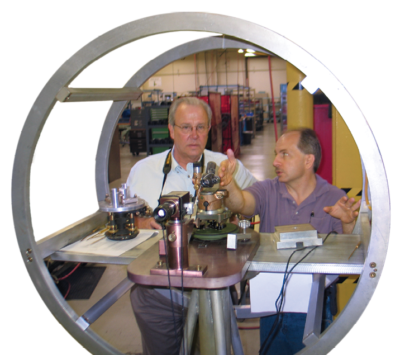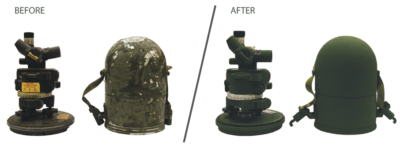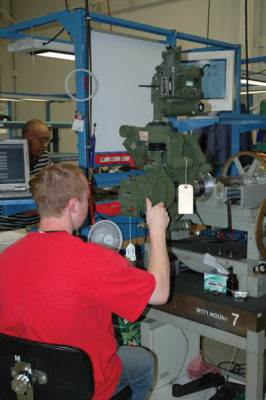A few years ago I was chatting with one of our contributors, Dr. Richard Elgin, and the subject of antique instruments came up. He informed me that although most surveyors think of Philadelphia when it comes to old instruments, not many know that St. Louis was also a nexus for surveying instrument manufacturing. And in particular, one company that still exists to this day, Seiler Instrument. Dick encouraged me to write their story. I agreed and several things fueled my motivation: First, it’s another great American immigrant story. German immigrants arguably provided most of the machining and instrument-making expertise for our country in the 19th and 20th centuries. Second, Seiler is and always has been a family-owned company. And third, Seiler makes and refurbishes something that’s near and dear to me, the M2A2 Aiming Circle.
After visiting an event hosted by the Ohio National Guard, I wrote about military surveying in 2011. Artillery use in the Viet Nam war created an enormous need for surveyors. Pre-GPS, battalion-level surveyors would typically establish local control, and from that, unit surveyors would “lay azimuth” to the individual howitzers. But from time to time, local control was not available (such as when a howitzer was dropped in from a helicopter) and quick azimuth control was needed. The M2 filled this need, and with coordinates picked from a topographic map and an idea of where North was, the guns could quickly get to work. An added bonus of the M2 was a three-star pattern etched into the objective lens: if a surveyor could locate Polaris, it and two other stars in the pattern would quickly provide orientation.
Inevitably, time marched on, and the Army no longer has the 82 Charlie Artillery Surveyor MOS (Military Occupational Specialty). It has been replaced with 13 Tango. But in looking at the job description on the Army’s website, the MOS now includes more about meteorology than surveying. Meteorology is important for knowing how weather will affect downrange ordnance trajectory. And besides, with the accuracies achievable by military-grade GPS, traditional artillery surveying is no longer needed for position and azimuth. But even so, I’ve learned that although artillery units today use GNSS-based methods they still maintain as a backup an opto-mechanical capability. As Tom Seiler said, “The Marines won’t let anything get in the way of accomplishing the mission!” I also learned that even though the function and operation of the M2 is simple, it’s a complex instrument and manufacturing it is very complicated. The company manufactures and refurbishes the aiming equipment mounted on most of the howitzers and mortars our military uses.
You can learn about the company history in the sidebar. Company founder Eric H. Seiler died in 1981. Eric H’s appreciation of fine craftsmanship and pride in his work contributed to the company’s philosophy of quality and customer service, a legacy he passed on to his son, current chairman of the board Eric. P Seiler, and his children, President/CEO Eric P. “Rick” Seiler Jr., Executive VP Tom Seiler, and Compliance Director Louise Seiler Schaper. With great grandchildren of Eric H Seiler also involved, four generations of Seilers continue. Although, computer numerical controlled (CNC) machines have replaced manually operated milling machines, there is no replacement for old-world craftsmanship, a necessary attribute of every instrument manufactured or sold by Seiler.
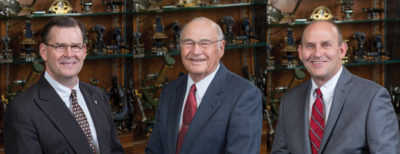
Left to right: Executive VP Tom Seiler; Chairman of the Board Eric. P Seiler, and President/CEO Eric P. “Rick” Seiler Jr.
Today, the company is composed of five different divisions: Seiler Geospatial, Seiler Design Solutions, Seiler Manufacturing, Seiler Medical, and Seiler Planetarium, of which Seiler is the sole distributor of Carl Zeiss in North America. According to Tom, “Optics are the commonality between all four major segments.” Revenues for these divisions are (respectively) $30 million, $20 million, $4 million and $1 million. According to Tom, the company has a $40 million backlog for the U.S. Army, U.S. Marines, and the military of India.
Diversification has proven to be critical in the company’s success. Demand for military equipment remains steady, which offsets cyclical ups and downs in the surveying industry. Manufacturing is also active in traditional high-tech machining for a variety of products. The Medical Division manufactures microscopes mostly for surgery, dentistry and ophthalmology. Being one of the largest Trimble dealers in the country, the Geospatial Division and Seiler Design Solutions sells and supports both Trimble and Autodesk products.
Having celebrated its 70th anniversary in 2015, Seiler Instrument has thrived. Based on a foundation laid down by Eric H—customer service—the company has responded to market needs by diversifying. Today, with more than 180 employees and multiple locations, Seiler provides the tools and training necessary to compete. As part of its policy of responsive diversification, Seiler pioneered the VRS used by the Missouri DOT. They have entered the UAS market and with licensed pilots on-board, Seiler is providing solutions to that rapidly expanding market.

Standing in photo are three generations of the Seiler Family. From left to right; Kurtis Schaper, Eric Seiler, Louise Schaper, Rick Seiler, Elaine Seiler, Matt Seiler, Eric Seiler, Sr., Tom Seiler.
Catering to not only surveyors, but also to construction contractors and anyone working in the AEC Industry (Architect, Engineer, Construction), Seiler more than meets the needs of the markets it serves. I found it interesting that many contractors have their instruments calibrated before each new large project. I asked Tom if he had seen a shift to contractors providing their own surveying services, and he said not really, but that contractors need assistance in connecting design data to machine control.
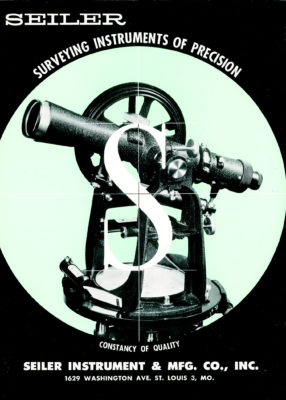
1945 Catalog.
Sidebar:
St. Louis Makers
The Seiler story really begins in 1899. In a paper written by Dick Elgin and Hugh Parsons, The St. Louis Makers of Surveying Instruments Since 1830, I discovered the immigrant part of the story. According to the paper, St. Louis, the “Gateway to the West,” (immortalized by Eero Saarinen’s Gateway Arch on the west bank of the Mississippi River in downtown St. Louis) was one of the great boomtowns of American history. The city is forever connected with the frontier and the settlement of America’s West. From about 1820 until the Civil war census records show a tremendous growth rate, mostly from European emigrants. By 1850 the city had captured the Mississippi River trade, and the trade which headed west, either overland or up the Missouri River. In 1860 the population was 161,000, the eighth largest city in America (ahead of Chicago). With the tremendous influx of German immigrants to St. Louis came a cadre of master craftsmen.
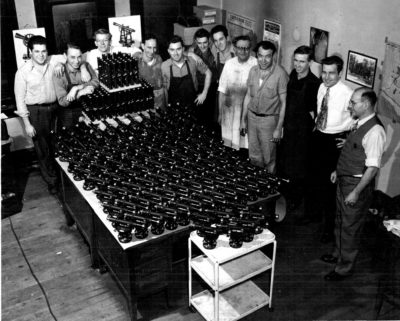 The late Charles Smart, in his The Makers of Surveying Instruments in America Since 1700, lists 27 different instrument makers as being located in Philadelphia, the acknowledged hub of early American makers. In their study of St. Louis makers, Elgin and Parsons have identified 24 who have had businesses in the “Gateway City.” So, St. Louis is not far behind Philadelphia where many important American makers were located. Sadly, of all the 24 St. Louis makers, only one remains…Seiler Instrument, the subject of this article.
The late Charles Smart, in his The Makers of Surveying Instruments in America Since 1700, lists 27 different instrument makers as being located in Philadelphia, the acknowledged hub of early American makers. In their study of St. Louis makers, Elgin and Parsons have identified 24 who have had businesses in the “Gateway City.” So, St. Louis is not far behind Philadelphia where many important American makers were located. Sadly, of all the 24 St. Louis makers, only one remains…Seiler Instrument, the subject of this article.
Regarding Seiler, the Elgin-Parsons article states: “Eric H. Seiler was born in Jena, Germany on April 30, 1899. In 1918 he graduated from the Carl Zeiss School of Fine Optics as a ‘Fine Mechanic.’ After service in the Navy in World War I, he returned to Jena to further his education, earning the degree Master of Fine Optics. (Note: In German, Fine, or Fein, means high-level.) In 1924 Eric H. Seiler immigrated to the United States, settling in St. Louis, where he was employed by Wissler Instrument Company. In 1926 he was promoted to manager of the company.
“In the late 1930’s, the Wissler Instrument Company was bought by the David White Company, but it continued to operate under the name of Wissler Instrument Company. In 1944, the David White Company closed Wissler Instrument Company and moved only Eric H. Seiler and Ervin Schmidt to their home office in Milwaukee, Wisconsin. At the time of the closing Wissler employed about 100 employees in St. Louis, mostly due to World War II military contracts.
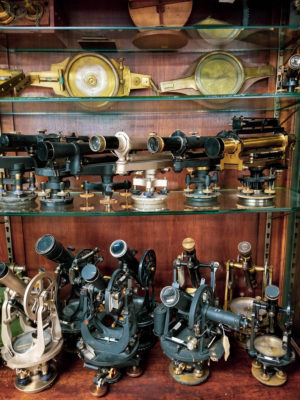 “After leaving David White in 1945, Eric H. Seiler founded Seiler Instrument Company in a small facility in St. Louis. Its primary service was the repair and overhaul of surveying instruments and microscopes. Due to Eric H’s optical expertise and his son Eric P’s business acumen, the company continued to grow and was soon manufacturing instruments designed by Eric H. Seiler. Most were levels for the construction industry, but later included Dumpy levels and transits. In 1956, the company outgrew its facility and moved to a larger facility with more room available for manufacturing. Due to competitive pressures from overseas manufacturers, the company concentrated more on military optics.
“After leaving David White in 1945, Eric H. Seiler founded Seiler Instrument Company in a small facility in St. Louis. Its primary service was the repair and overhaul of surveying instruments and microscopes. Due to Eric H’s optical expertise and his son Eric P’s business acumen, the company continued to grow and was soon manufacturing instruments designed by Eric H. Seiler. Most were levels for the construction industry, but later included Dumpy levels and transits. In 1956, the company outgrew its facility and moved to a larger facility with more room available for manufacturing. Due to competitive pressures from overseas manufacturers, the company concentrated more on military optics.
“In 1968, the company moved to a new facility in Webster Groves, Missouri, designed to accommodate a complete optical manufacturing environment with three buildings totaling 50,000 square feet for all divisions to accommodate expansion.
In 2009, the company moved to accommodate further expansion and bring all divisions under one roof with the purchase of a 150,000 square foot facility in Valley Park, Missouri and employs more than 180 people, with six total offices, selling geospatial solutions across the Midwest.
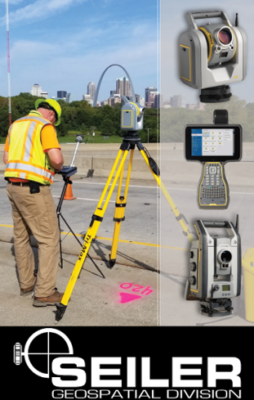 Sidebar:
Sidebar:
Company Divisions
Geospatial
Today the Seiler Geospatial Division is one of the largest suppliers of brand name surveying and supply equipment in the Midwest. It has nationally recognized service and repair facilities and offers certified training and support. The headquarters operates out of St. Louis and the company has five other offices across the Midwest—most include showrooms, repair departments, and training facilities. These offices are located in Kansas City, Milwaukee, Indianapolis, Omaha and Chicago. Seiler’s team members are all skilled professionals that believe in a hands-on approach to working with our customers. Seiler team members include registered land surveyors, certified GISP professionals, licensed pilots, certified trainers, as well as other surveying and mapping professionals and skilled support staff. Seiler is a Trimble Authorized Service and Repair Provider and Authorized Distribution Partner. They are also an Authorized Dealer for Spectra Precision, GeoSLAM, DJI, Seafloor Systems, Laser Technology, Esri, Microdrones, DELAIR, and Bluebeam as well as other high quality equipment and software.
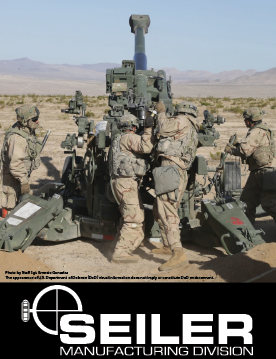 Manufacturing
Manufacturing
Seiler Instrument is a contract manufacturer of complex instruments, machined parts, assemblies, and subassemblies with core competencies in design and engineering, machining, assembly, testing, inspection, and servicing. Seiler is the Original Equipment Manufacturer for the optical fire control used on all United States howitzer and mortar systems. This includes the manufacture of telescopes, periscopes, telescope mounts, periscope mounts, aiming circles, fire control quadrants, and more. Seiler machines, assembles, and tests products for the United States Government, military contractors, and companies in the private sector. Within its realm of machining, assembly, and testing capabilities, Seiler also specializes in the inspection, repair, overhaul, and refurbishment of the artillery fire control used on all existing United States howitzer systems as well as many howitzer systems used by our allies.
 Design Solutions
Design Solutions
Seiler Design Solutions provides informative and educational solutions to help clients optimize their design workflows. Seiler Design Solutions is an Autodesk Gold Partner and Certified Training Center. The design solutions team offers template creation, workflow analysis, skills assessment training and custom training focused on their client’s needs.
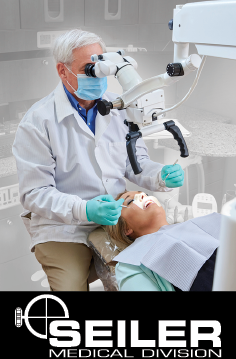 Medical
Medical
Seiler Medical offers an array of products geared to meet the technological demands of the dental, surgical and medical markets. As a worldwide leader in the field of Microscopy, Seiler prides itself on the use of high quality optics and precision machining to provide the market with the latest in magnification for a varied range of applications. Seiler Medical offers a wide variety of microscope products for both the Medical and Dental Markets. Colposcopes are available with a variety of options and attachments to suit any office, clinic or hospital; ENT scopes for Ear, Nose and Throat Doctors and Surgeons; Compound scopes for research, laboratory, and educational applications; Dental scopes for Enhanced General dentistry and Endodontics; and LED Surgical Loupes for any applications needing low power magnification.
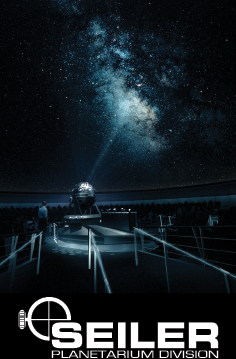 Planetariums
Planetariums
Seiler Instrument’s Planetarium Division is the sole distributor of Carl Zeiss Planetariums in the United States and Canada. Seiler Instrument provides immersive display systems to explore the world around us and bring visitors to the outer edges of the universe. Whether looking for crisp stars under a dark night sky from a precision ZEISS star projector, or advanced scientific visualization and 360° shows from a modern digital projection system, Seiler can create a space that is right.
Sidebar:
Timeline
1945
Seiler Instrument repair and refurbishment begins in St Louis
1947
Eric H. Seiler designed first set of survey instruments for distribution, which included construction levels and then dumpy levels and transits.
1950
Partnership with Zeiss to sell microscopes in North America. After a few years, the partnership ended and Seiler began manufacturing its own microscopes
1957
Partnership with Zeiss Planetariums for North America
1960’s  1988
1988
Seiler was authorized Wild/Leica Dealer
1988
Seiler became an Authorized Trimble Dealer. Long-time partnership with Wild/Leica ends.
1990
Seiler transferred from a software reseller for Softdesk, Inc. to become a designated Autodesk Authorized Value Added Reseller.
1990 thru Current
Expansion of geospatial division offices across the Midwest. Kansas City, Wisconsin, Indianapolis, Nebraska and Chicago
